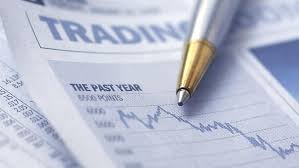Excahnge of cash flows on account of an investment or payment obligation is termed as Swap.The investment or payment obligation based on which the cash flows are determined is known as the underlying or notional value of swap.
Swaps include both spot and forward transactions in one agreement and are generally customized transactions.A party can unwind or reverse a swap position before the end of the term by cancelling the agreement and delivering a final difference payment to the counter party.
The precursor of the swaps were “parallel loans” which helped companies to reduce their exposure to fluctuating foreign exchange rates.As a result of deregulation, growing international financial integration and increasing volatility of interest and exchange rates, the swaps have become one of the fastest growing financial derivatives now.
The types of swaps which play a cucial role in financial markets today are;
1. Interest rate swap- It is the exchange of cash flows between two parties where, both the legs are based on interest rates.No matter where the base rate moves, one has to always pay the fixed interest rate on which the counterparties have agreed.Fixed rate offered by a bank moves independent of the base rate depending upon the market.
2. Equity swap- A financial derivative contract where a set of future cash flows are agreed to be exchanged between two counter parties at set dates in the future is called as equity swap.Here one leg is usually pegged to a floating rate such as LIBOR, also known as floating leg.The other leg of the swap is based on the performance of either a share of stock or a stock market index.This is known as equity leg.Most equity swaps involve a floating leg versus an equity leg though some exist with both legs as equity legs.
3. Currency swap- A contract involving exchange of a foreign currency in the spot market with a simultaneous agreement to reverse the transaction in the forward market.Both exchange rate and timings of the forward market transactions are specified at the time of swap.In a currency swap, both the principal and the interest in one currency are swapped for the same in another currency.Once the maturity is attained, principal amounts are swapped back.
4. Foreign exchange swap- When an agreement takes place between two parties to exchange two currencies at a certain exchange rate at a certain time in future.In other words, it is an agreement to exchange stipulated amounts of one currency for another currency at one or more future dates.It is also called as Forex swap or FX swap.
5. Credit default swap- It is the credit derivative contract between two parties where the buyer makes periodic payments to the seller in order to safe-guard the self from the effects of any possible credit event.In other words,a swap in which the buyer makes a series of payments and, in exchange receives a guarantee against any default from the seller on a designated debt security.
The possible credit events, which could be experienced are:
* Failure to pay- When a company is unable to meet its payment obligations.
* Bankruptcy- When a company becomes bankrupt.
* Restructuring- When a company undergoes a makeover.
* Moratorium- When a company is willing to sell its shares, bonds etc. but the demand is very low.
Click here for government certification in Accounting, Banking & Finance




32 Comments. Leave new
very informative
thanks manisha!
Thats an elaborate explanation.. Well done..
Thanks stephy…..
Nice article Aman. Well explained.
Thanks akul…..
hmm…an ok article…some original ideas could also have been added
I would love to hear about those original ideas.could you please let me know?@abhay
thanks….
Very nicely described
thanks megha!
Good Work.. 😀 .
thanks ani!
well codified:)
thanks manpreet!
Well explained
thanks surya!
nice!!
thanks avni!
Explained well..!
thanks padma!
nice work
thanks prateek!
very nicely explain
thanks prachi!
Being a student of Commerce i can tell a lot about SWAP. I think you have covered a decent amount of it. Nid effort
This forum has certain limitations, I cannot be more expressive and as far as the knowledge of. any particular subject is concerned it has nothing to do with one’s stream.its all about your zeal to learn.@sankalp
Wonderfully described!
thanks juhi!
Great efforts put
thanks ria!
nicely done !!
thanks nuru!